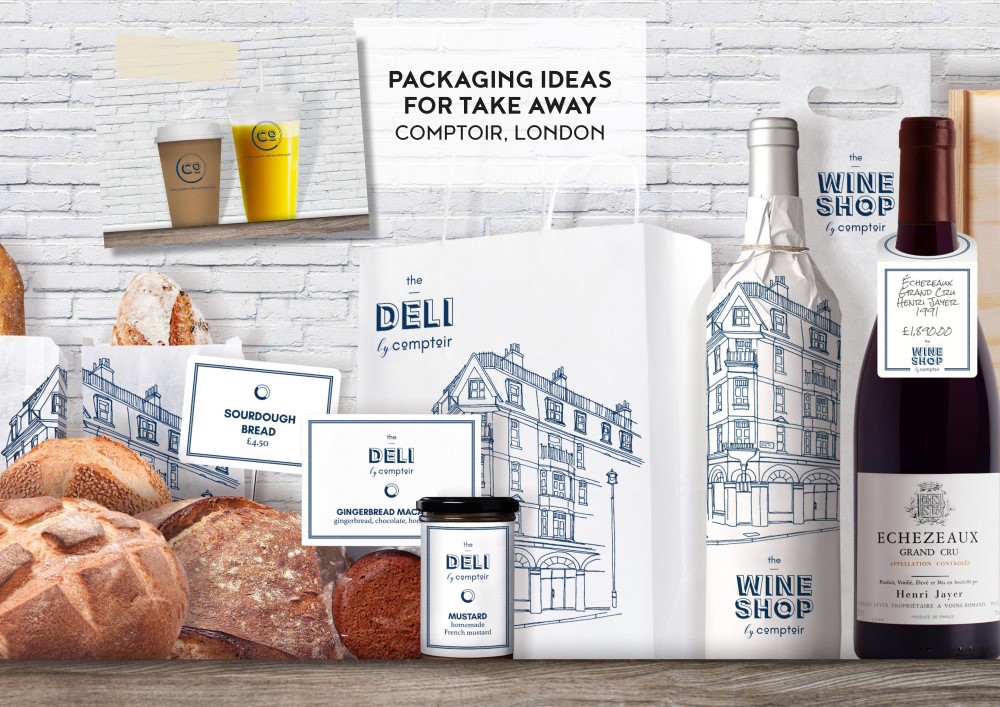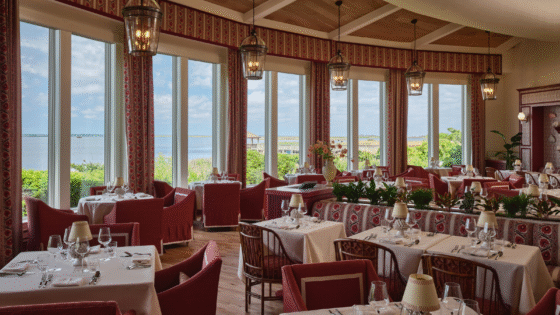There is a serious question being put to the industry on whether public areas will ever be the same again. In an exclusive interview with Hotel Designs, Mark Bithrey, the Founder and Creative Director of B3 Designers sits down virtually with editor Hamish Kilburn to discuss F&B design in a post-pandemic world…

In just a few days time, Hotel Designs will go live to the world with its debut virtual conference. The topics we will explore during Hotel Designs LIVE will include technology, sleep, wellness and whether public areas will ever be the same again. In order to understand the role of F&B areas, while also getting an access-all-areas deeper look into the inner workings of the studio, I caught up with Mark Bithrey, the Founder and Creative Director of B3 Designers. The award-winning studio has transformed many F&B hospitality projects, such as The Prince Akatoki, Marriott Hotel Budapest and Ritz-Carlton Geneva among many others.
Hamish Kilburn: Thanks for joining me, Mark. How are you feeling right now as a hospitality interior designer?
Mark Bithrey: The world has been through really tough times, but this one has definitely knocked the hospitality industry for a six. I have always believed in 2 things: that hospitality will forever have a strong place in the world in some form or other, and two, that design plays a pivotal role in shaping a changing world. So I’m feeling a mix of anxious and eager.
HK: When restaurants do eventually open up, we are still looking at reduced covers and therefore revenue. What are your thoughts there?
MB: We have been helping clients redesign their restaurants for social distancing, with beautiful screens and additional features like plants and cushions. But you are right, it can mean reduced revenue. Some of our clients have been really creative and opened up whole new streams of revenue.

Image caption: Design in F&B has spilled into the marketing and packaging of products with a rise in demand for deliver/takeaway service. | Image credit: B3 Designers
HK: There is obviously a lot of focus on takeaways at the moment. How can F&B businesses be more creative when adapting to the times?
MB: Quick service has immense potential. Think about kiosks where you are able to churn out dishes quickly. Our clients at Mei Mei are doing just that, with Michelin star winning Chef Elizabeth Haigh at its helm. Also consider Itsu/Pret style shops, with impactful branding and graphics on the floor. You can look into takeaway/delivery-only kitchens with creative food packaging. Extra brownie points for eco-friendly packing! We are working with a Vietnamese restaurant in London at the moment to use clever packaging to build out loyalty, repeat orders, and engagement.

Image caption: Mei Mei has adapted its offer during the pandemic to focus on takeaway service | Image credit: B3 Designers
HK: Speaking of food delivery, it does mean that restaurants are reliant on the large delivery services that eat into their revenue considerably. How can they move away from using the shared delivery systems?
MB: Yes, indeed! Have you heard of Mumbai’s dabbawalas? It’s an incredible concept. Think localised kitchens, subscription meals, and your own fleet of delivery folk racing food on bicycles. Typically, a kitchen will cook a few hundred meals a day. The subscription lunch will include food that can be batch cooked – so a lentil dish, a curry, rice, and perhaps some bread. This is then packed into stainless steel “tiffin” boxes, and delivered quickly, while the food is still hot. Because the kitchens are localised, nobody is travelling more than a couple of kilometers and they are often the service teams themselves. The previous day’s box is picked up and brought back – no packaging waste!
Food trucks are another way to circumvent delivery commissions. With all the right permissions, you could set up in a park/outdoor space and serve up anything you want to, really. Think also about drive-throughs or walk-past counters for food pick up. You can even offer an interesting experience (graphics/games) while they wait in line.

Image caption: Gourmet takeaway food truck | Image credit: B3 Designers
HK: What about fine dining, how can businesses integrate social distancing into this concept?
MB: Without a doubt, fine dining is going to change for a while. Restaurants that get very crowded are going to have to give customers more room – which can be quite cool if you think about it.
Smaller restaurants however, are quite fortunate and can use their spaces to offer truly caring experiences. We have worked with Michelin star winning Chef Tom Aikens in the past, whose restaurant Muse spans 950 sq ft. “Muse is very unique in that it is for guests not only looking for great food in a very special restaurant, but welcomes them as if they were in their own home. Guests will always get special care and now more than ever, of being looked after and pampered,” said Aikens.
If you have outdoor space, however small, milk it. Erect pods or beautiful temporary structures. Adapt for weather changes with fans and space heaters. You could also think about bringing your restaurant completely outside – are you on a street that could be pedestrianised, or do you have parking space that could be converted?
For indoor spaces, think gorgeous on-brand free standing folding screens. In hotels, use your banquet rooms as restaurants so you can offer more space between tables.
If you want to be really creative, as the rules relax more, consider catering services for small gatherings, or even a fine dining experience that you can take to people’s homes. We may follow off where you mention that Muse is small, and say that it is massive in experience.
HK: Is there a way for F&B professionals to go where customers already are?
MB: Supermarkets and the internet! This is a great time to consider creating your own line of sauces/pastas/food kits. Paired with solid branding and graphics, it could open up a whole new stream of revenue. Could you create barbecue kits for example, with recipes and ingredients?
We are spending a ridiculous amount of time on the internet now. Host cooking lessons and sell kits after. And remember to up your digital presence – it is the only way people will learn of your restaurant/hotel’s F&B offerings.
Main image credit: B3 Designers




